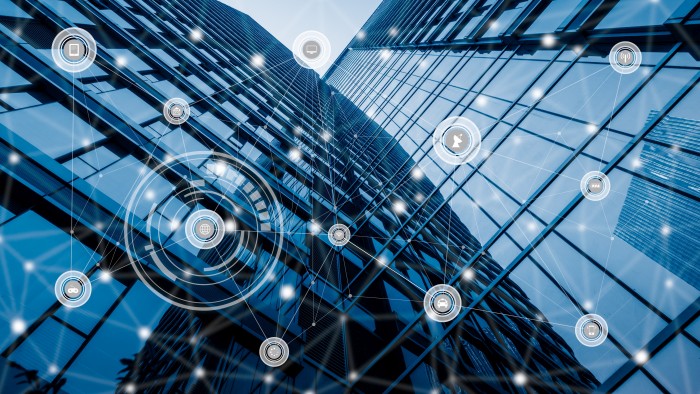The Impact of 5G & Corporate Real Estate's Changing Telecommunications Landscape

Across the globe, the digital transformation is driving demand for more … more applications, more services, and as a result, more bandwidth. As this trend progresses, in-building networks are increasingly becoming strained.
One of the most significant emerging trends that will stress networks is 5G.
5G represents the fifth-generation of cellular wireless. What’s notable is 5G will connect people and things through greater speed, lower latency, and massive simultaneous connectivity. These network advancements will enable and inspire a new wave of computing and technological innovation that will change the way we live and work – which some refer to as the Fourth Industrial Revolution.
So, what does this mean to the corporate real estate and facility industry? Before I answer, let’s first take a closer look at 5G.
What is 5G?
Since the 1980s, wireless services providers (WSPs) have rolled out a new generation of cellular wireless approximately every 10 years.

5G is based on specifications defined by the international standards body 3GPP (3rd Generation Partnership Project) in its Release 15 document. According to 3GPP, 5G performance targets include high data rate, reduced latency, energy saving, cost reduction, higher system capacity, and massive device connectivity.
5G, which is now starting to be introduced in controlled test markets worldwide, exhibits traits which characterize it to be both evolutionary and revolutionary. Specifically, while the increase in higher data rates may be considered evolutionary, its other aforementioned capabilities are expected to revolutionize virtually every industry and economy, and the way we live our lives. For instance:
- 5G-enabled Internet of Things (IoT) sensors throughout smart buildings, cities, communities, and campuses will provide more efficient services to citizens, increase collaboration among different economic sectors, and encourage innovative business models in both private and public sectors.
- In healthcare, 5G will enable virtual medicine to substantially increase the effectiveness of preventative care, as well as robotic surgery.
- Autonomous vehicles, enabled by the low-latency 5G network, will help make transportation safer, parking easier, and improve traffic flow and congestion.
The density of radios and the fiber optic backhaul infrastructure are as critical as the spectrum itself for 5G. So even if you have spectrum available, if the network isn’t designed properly, 5G won’t become a reality.
The Dilemma of More
5G is likely the tipping point for in-building networks already strained by the "dilemma of more." The digital transformation, which comprises myriad technologies, services, and applications inside the building, represents an undeniable shift that has a snowball effect upon the network. More devices and services at the edge; more connections to the network requiring more bandwidth; more single-purpose cabling, switches, and actives; more jammed pathways and overcrowded closets; more costs to power and cool components; more specialized talents to deploy and manage; and more disruption or rip and replace.
And, lest we forget about in-building cellular connectivity – often described as the Fourth Utility – 5G will likely "break" many legacy distributed antenna system (DAS) and small cell networks unable to support the density of radios and bandwidth requirements. Ironically, the critical aspect in network planning that gets overlooked most is the network itself.
To meet the demands of tenants and other stakeholders as well as enable smart building outcomes and prepare for 5G, it is incumbent upon CRE leaders to proactively deploy "smart infrastructure" capable of adapting to and supporting the rapidly-evolving connected world.
Infrastructure is the "plumbing" for connectivity. However, the plumbing needs to serve two functions: first, it needs to provide transport for bandwidth; and secondly, it should deliver power to the active devices at the edge of the network. But, like plumbing, infrastructure should last the lifetime of the building.

Fiber is the ideal smart infrastructure media because it provides virtually unlimited capacity. An elegant way to provide power is through a composite cable infrastructure, which marries fiber and copper conductors into a single infrastructure to deliver both bandwidth and Power over Ethernet (PoE).
A network plumbed with fiber and power as deep as possible to the edge provides low long-term total cost of ownership. Fiber not only provides virtually unlimited capacity, but it is also the ideal media to converge multiple applications and services such as voice, data, and video on the same infrastructure to deliver compelling ROI.
Conclusion
5G will most certainly be an evolution of today’s networks, but the impact will likely be even more significant. Beyond being evolutionary, 5G is potentially revolutionary.
The possibilities are virtually unlimited, but a smart, fiber-deep infrastructure will be paramount to making the digital transformation vision – of which 5G is a key part – real. To keep up, smart buildings will undergo their own fiber-in-the-horizontal transformation.
5G and all other relevant telecommunication topics will be discussed at CoRE Tech 2018, which will be held on Nov. 14-16 in Silicon Valley. For more information, visit Program Details.
This Week’s Sponsor
Embracing open software and hardware platforms, Lynxspring develops, manufactures and distributes edge-to-enterprise solutions and IoT technology, to create intelligent buildings, better energy management, equipment control and specialty machine-to-machine applications. Lynxspring technologies and solutions are simplifying connectivity, integration, interoperability, data access and analysis from the edge to the enterprise and is deployed in millions of square feet of commercial facilities. For more information about Lynxspring, visit www.lynxspring.com.
Read Next
 4/18/2024
4/18/2024
Best Practices for Managing Lease Renewals When your commercial leases come up for renewal, it’s a great opportunity to assess your real estate portfolio, consider the value of current leases and possibly negotiate better terms.
 4/11/2024
4/11/2024
3 Reasons to Incorporate AI Into Your Talent Retention Strategy Introducing new technology into the workplace is often met with suspicion.
 4/4/2024
4/4/2024
Operational Technology (OT) Data Data has been a cornerstone of business since the early days of computing in the 1960s.
 3/28/2024
3/28/2024
The Tech-Forward Response to Rising CRE Cap Rates is Also People-First Cap rates on commercial real estate have been rising for five consecutive quarters, leading to an estimated 20% drop in value for many property types, according to CBRE’s latest U.S. Real Estate Market Outlook.




.jpg)




